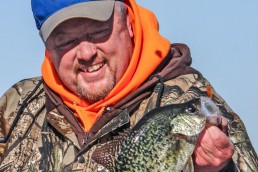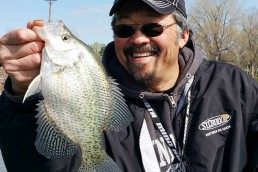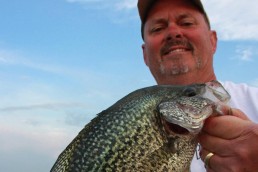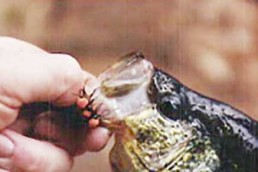Catching Crappies on Humps
SHARE THIS POST
Crappies are structure-loving fish. Humps are major players when fishing structure for them, and are good from the South to far North. In the following tips, experts share some of their tips for chasing slabs on these submerged hilltops.
BrushpPile Fishing TV host, Russ Bailey from Ohio says, humps can be very productive up North. “Humps can be good year-‘round. Spring is really good up here when the fish turn on, but a hump can be good anytime, including the fall.
“Years ago it took a lot of searching, but with today’s mapping and electronics, humps aren’t difficult to find. Find the right depth, and you’ll have lots of action.
“The depths can vary, but something about 14 feet deep, maybe up as shallow as 8 feet, can be productive in late fall. I love to cast if the depths are right. I’ll use a jig or jig tipped with a minnow.”
A lot of impoundments are drawn down to winter pool to provide an extra layer of protection from floods. Late fall is when most drawdowns start. Fishing guide Brad Whitehead says, “The water is cooling, and fish will be scattered until the water gets cold. So in the fall, we look for structure in the middle depths, or even shallower water. A hump that tops out at 8 or 10 feet is ideal because the shad are roaming, and like getting on something like a ledge or hump. Find the shad in a location, and you’ll always have some crappie.”
Whitehead says things change and stabilize as the water gets colder in late fall and early winter. He prefers a drop with an upper depth around 14 feet, but dropping down to 20 or more at the bottom. A hump in this depth will be good all winter long.
“I work a hump from the top of the hump down to deeper water, so I don’t spook the upper fish by catching the deeper fish first (and pulling them up through the shallower fish). A hump is great because it allows a lot of different depths to be worked in a hurry.
“One particular hump I like is about half the size of a football field. Current can be a factor, with little current being best. Shad get on the back-current side, and crappies come to them. Another factor is (bright) sunlight, because it pushes the shad deeper.”
Whitehead uses a side pull method, keeping his speed very slow. He prefers live minnows in the cold water. Putting the bait near cover, like logs and manmade brushpiles, is always a good choice for more fish. Electronics are critical to watch hump contours, cover and fish.
Are you enjoying this post?
You can be among the first to get the latest info on where to go, what to use and how to use it!
Missouri guide Terry Blankenship says humps are good year’round and are premium structures. He agrees with the other experts that finding the right depth is critical. He says humps are premium structures that will hold fish a long time, as long as they’re not too shallow.
“Maps are critical for finding humps,” says Blankenship. “Mapping and Side Imaging are important to locate the best specific part of a hump. Finding cover and baitfish will put you on crappies.”
Blankenship likes to cast in clearer water lakes, but chooses vertical jigging in stained waters.
“Lake of the Ozarks has clearer water, so I like a blue-ice-colored Bobby Garland Slab Slay’R. The jig is versatile, whether casting or jigging.”
Tips
Humps should be thoroughly inspected with electronics before fishing. Small drop-offs, irregular feature and brush are important things to note. Markers and GPS waypoints allow you to go back and fish specific covers and structures.
Consider fishing in a stair-step method. If the hump is 8 feet at the top and 15 at the bottom, start at 15 feet and stair-step your way up in one- or two-foot increments, until you find the depth of active crappies. This works best with vertical jigging or slow trolling.
Mark spots, back off and cast. A fisherman can work a spot or area without getting too close to the fish. Be sure to cast past the spot, let the jig settle to the correct depth and slowly retrieve the jig. Or, use a slip-float and minnow rig. The slip-float allows precise depth control and can be kept on the spot as long as necessary.
Final tip: Pay attention to current. Crappies are okay with a little current, but too much puts them behind cover and structures. Paying attention to current allows you to better predict where crappies will be located.
MWO
SHARE THIS POST
Did you enjoy this post?
You can be among the first to get the latest info on where to go, what to use and how to use it!
Tim Huffman
Tim Huffman specializes in crappie fishing, is editor for two crappie magazines, as well as writing for several others. In 2018, he published his sixth book, Limiting Out for Crappie, available at Amazon. His first article appeared in MidWest Outdoors in 1988.



